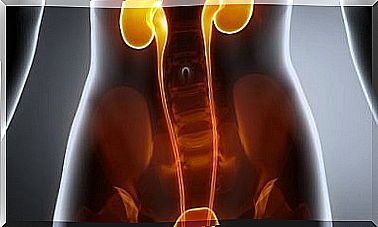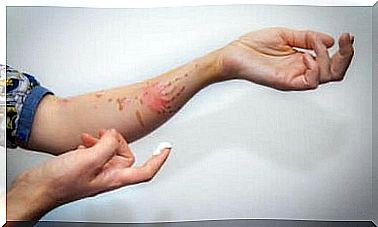Pentothal: Administration And Contraindications

Pentothal is a drug used as a general anesthetic. This substance belongs to the group of barbiturates, used as sedatives and analgesics for the depressive action on the central nervous system.
We can also find pentholan under the name of sodium thiopental as it is a medicine derived from thiobarbituric acid.
It is underused today as there are other drugs that cause fewer side effects at lower doses.
Patients reported feeling slow and slightly disoriented upon awakening. Most of them reported hangover-like symptoms.

In any case it is an ultra-fast acting medicine, which in the past was tried to be used to induce the patient into a state of hypnosis. This effect, however, was eventually disproved as scientific evidence showed that it was an anesthetic that lasted a few minutes.
What is the mechanism of action of pentothal?
Pentothal, like all barbiturates, binds to GABA receptors. The mechanism of action is the same as for other sedatives, such as benzodiazepines (although the receptor subtype is different).
When the substance joins the receptor, they form a unique complex that modulates the transmission of information to the central nervous system.
As a final result of the interaction, the sedative and anesthetic effect is produced. If you have seizures, it will block them by modulating the neurotransmitter GABA. In fact, pentothal is also used as an anticonvulsant.
The sedated patient enters a state of calm which reduces the central metabolism. Since nutritional needs are very low, blood supply also decreases. The drug therefore reduces blood flow and, consequently, intracranial pressure.
In which cases is pentothal used?
The main indication for the use of pentothal is orotracheal intubation. The characteristics of a drug with an ultra-fast anesthetic action make it the perfect candidate.
The most interesting aspect in this sense is that, at very low doses, it allows to cancel the pharyngeal reflex and thus facilitate intubation.
This is particularly useful in urgent situations. Cases in which the patient does not breathe properly and presents a trauma in the mouth. The presence of blood, or foreign bodies (objects, teeth), makes it difficult to visualize the canal for intubation. In this case we opt for inhalation anesthesia.
Pentothal can also be used as a general anesthetic in short interventions. Although, as already mentioned, this practice has fallen into disuse. Today, the use of other types of drugs is preferred.
Mainly because it is an anesthetic and sedative, but not an analgesic. That is to say, it does not calm the pain. Just relax the patient.
There are concrete situations in which it can be an evaluable option. For example, to prepare the patient for neurosurgery when he has refractory cranial hypertension following a cranial-brain trauma.
It is also indicated in the case of psychiatric patients with seizures who do not respond to other treatments.
What contraindications does pentothal have?
The cases in which the administration of pentothal is contraindicated can be summarized in the following points:
- Hypersensitivity to barbiturates. It means that with a small dose the effect on the patient is very intense and long lasting. Being an anesthetic, it can cause respiratory failure.
- Along with other central nervous system depressants. Especially alcohol. They work in a similar way and their effect is enhanced.
- Pregnancy and breastfeeding. Pentotahl is absorbed by the fetus and inhibits its nervous system.
- Work where dangerous substances have to be handled or driving. The sedative effect reduces the ability to concentrate.
Pentothal administration?
Pentothal is always administered intravenously with the exception of inhalation anesthesia to intubate.
There are variants in the posology, but usually injectable doses of 2-4 mg / kg are used. It must be considered that each person has a different sensitivity, therefore it is essential to start with the lowest dose and increase it a little at a time.
The maximum effect is reached one minute after administration. As mentioned in the previous paragraphs, the effect of this drug lasts a few minutes if a maintenance dose is not administered.









